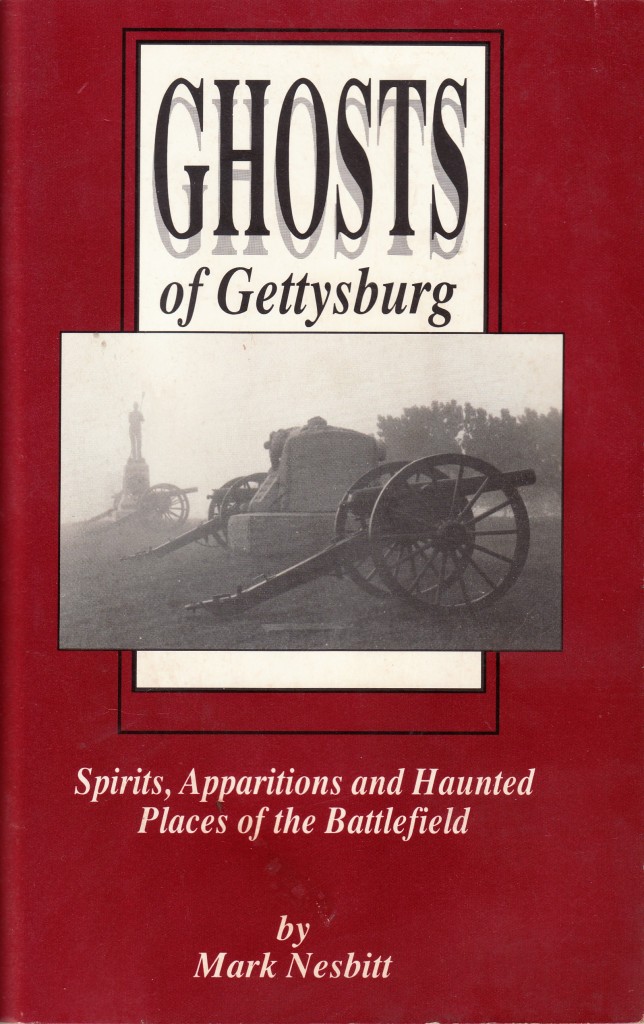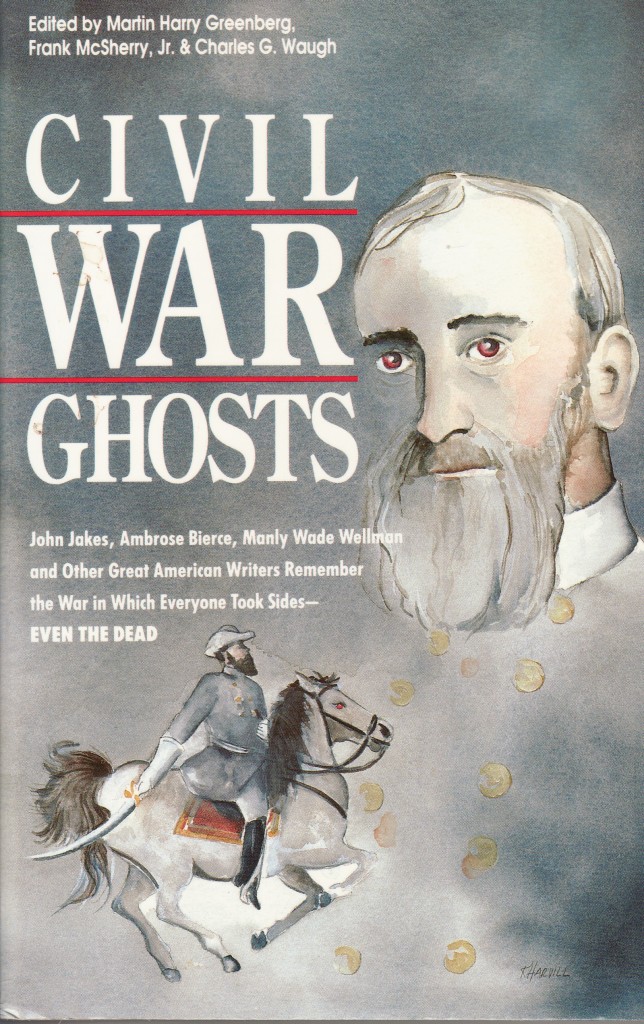Civil War Ghosts
Posted By Norman Gasbarro on October 31, 2011
The population of the United States was only about 30 million at the time of the Civil War. More than a half million lost their lives in the war. Few went off to war expecting not to return. Many believe that ghosts of the men and women whose lives were suddenly cut short still wander the earth today hoping to find some satisfactory conclusion to the unfinished business they left behind as living persons. A whole body of literature has emerged to describe the supernatural phenomenon that has occurred surrounding the loss of so many in such a short time. Two works are described here – one purporting to be fact and one admitting to be fiction.
Ghosts of Gettysburg: Spirits, Apparitions and Haunted Places of the Battlefield, written by Mark Nesbitt, was published in 1991 by Thomas Publications of Gettysburg, Pennsylvania. Nesbitt, a Gettysburg resident and National Park employee, has put into writing the stories he has heard about and researched for more than twenty years. The “spirit-tales”, as he calls them, are still being told today by visitors to the battlefield, many of them descendants of those who fought there. In his preface, Nesbitt states:
As far as finding an event that should supply America with innumerable stories [of happenings after death] – explained or inexplicable – there cannot be one more ripe than the Civil War, that greatest of all American spiritual calamities, the horrible, monstrous manifestation of Cain and Abel right from Genesis, where the two sections of the country tore at each other’s entrails until we were fortunate that either side remained….
More often than not, when the men of the 19th century wrote about the dead of the battles, they spoke of “leaving” them on the field. in fact, the way they refer to it, it sometimes grows confusing – do they speak of mortal remains, or spiritual?
So it it is perturbed spirits who return to – or remain at – the place where they reluctantly left some unfinished business, or to the spot where they resigned this world too suddenly for their journey into the next, or to some touchstone where they need to find the answer, not to why the died, but why they ever even lived, Gettysburg is as likely a place as any for them to be.
Nevertheless, as these stories will attest, something has been happening at Gettysburg since the battle, a a lot of people have seen things they cannot explain, but were certain enough they saw them to repeat them. Whether you believe all these witnesses to the unexplainable or not is not part of the caveat. Nevertheless, here they are….
The second chapter of the book talks of the photographers who discovered mysterious images on the pictures they took at Devil’s Den and of the mysterious stranger dressed like a ragged hippie who pointed out to them where to take the pictures. Other chapters tell of strange groups of re-enactors that appear and disappear on the battlefield. The stories seem to cover every aspect of the battle and of the battlefield.
The second book is pure fiction and is a compendium of short stories about ghosts and the Civil War as told by relatively well-known American authors. Civil War Ghosts was published in 1991 by August House Publishers, Little Rock, Arkansas. It was edited by Martin Harry Greenberg, Frank McSherry Jr., and Charles G. Waugh. Stories in this volume are: “Miranda, ” by John Jakes; “The Army of the Dead,” by John Bennett; “The Shot-Tower Ghost,” by Mary Elizabeth Counselman; “Iverson’s Pits,” by Dan Simmons; “The Drummer Ghost,” by John William DeForrest; “The Last Waltz,” by Seabury Quinn; “An Occurrence at Owl Creek Bridge,” by Ambrose Bierce; and “Fearful Rock,” by Manyl Wade Wellman.
The introduction reveals why the stories were chosen – for their “drama, entertainment, and power to chill.”
From one of the stories:
“What is it that goes by in the night?”
“It is the Army of the Dead going by.”
“Where on earth are they going?”
“To reinforce Lee in Virginia. They are the dead who died in the hospital here before the war came to an end. At the end of the war came peace for the living. But no one could sign a peace for the dead. So they, not knowing that peace has come, rise from their graves at midnight and march off, forever, until Judgment Day, to reinforce Lee in Virginia. While all still went well for the South, they slept and rested from battle. But when the armies of the North came crowding down and the army of the South began to bend, they who lay dead in the hospital yard pushed off their coffin lids, rose from their graves, and marched to strengthen the bending battle line. They do not know that peace has come, and so, until the last trumpet sounds, they rise and march to Virginia forever.”
John Bennett, who told that story, was born in 1865, was educated at the University of South Carolina and had successful careers as a writer, mapmaker, guitarist, illustrator and advertiser. In 1946, he wrote, Doctor to the Dead, based on legends of Charleston, many of which dated back to the Civil War.
Whether a believer or a skeptic, these ghost stories are sure to entertain. The literature can be approached from the perspective of fact (as in the case of Ghosts of Gettysburg) or as fiction (as in the case of Civil War Ghosts) and there are many other works not mentioned here that could be included. Ghost stories, published and unpublished, are sought by the Civil War Research Project, especially if they pertain to veterans who have some connection to the Lykens Valley area.
 ;
;




Comments